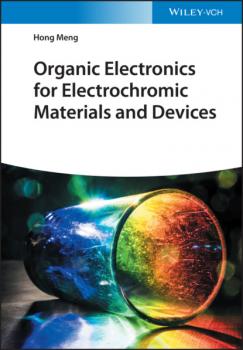John Wiley & Sons Limited
Все книги издательства John Wiley & Sons LimitedVeterinary Clinical Parasitology
New edition of the market-leading benchtop reference on the diagnosis of internal and external parasites in animals, including expanded coverage of parasites of reptiles, birds, and other exotic species Veterinary Clinical Parasitology, 9th Edition , allows for a quick and accurate reference to internal and external parasites found in a wide variety of domestic animals and laboratory animal host species. Focusing on the tests and information most relevant to daily veterinary practice, this classic benchtop manual contains a wealth of high-quality images to assist readers in diagnosing parasitic disease and identifying and treating relevant parasites. Contributions by leading experts in veterinary pathobiology and parasitology cover fecal examination for the diagnosis of parasitism, detection of parasites in the blood, diagnosis of arthropod parasites, and more. The latest edition contains fully revised material throughout, including new and expanded information on immunodiagnostic and molecular diagnostic tests, additional parasite-specific material on the benefits and limitations of different test modalities, and increased coverage of reptiles, birds, and other exotic and laboratory animals. New sections include up-to-date information on anthelmintics, antiprotozoals, and other antiparasitic drugs, and challenging case studies that provide insights on situations where identification of parasites is especially difficult. Published under the auspices of the American Association of Veterinary Parasitologists (AAVP), this indispensable clinical manual: Describes accurate and cost-effective techniques for diagnosing parasitic infections in animals Presents clear and concise information on the distribution, life cycle, and significance of each parasite covered Contains hundreds of color clinical images to enable rapid picture-matching and aid in diagnosis Offers a spiral-bound format that allows the book to lie flat on the benchtop, ideal for regular use in daily practice Features revised content throughout, including new chapters and images, an improved format, an enhanced color scheme, and an updated companion website Veterinary Clinical Parasitology, 9th Edition is an essential resource for practicing veterinarians, veterinary technicians, diagnosticians, researchers, and students in need of a timely and efficient reference on morphologic identification of parasites in different animal species.
Wind Energy Handbook
Discover this fully updated and authoritative reference to wind energy technology written by leading academic and industry professionals The newly revised Third Edition of the Wind Energy Handbook delivers a fully updated treatment of key developments in wind technology since the publication of the book’s Second Edition in 2011. The criticality of wakes within wind farms is addressed by the addition of an entirely new chapter on wake effects, including ‘engineering’ wake models and wake control. Offshore, attention is focused for the first time on the design of floating support structures, and the new ‘PISA’ method for monopile geotechnical design is introduced. The coverage of blade design has been completely rewritten, with an expanded description of laminate fatigue properties and new sections on manufacturing methods, blade testing, leading-edge erosion and bend-twist coupling. These are complemented by new sections on blade add-ons and noise in the aerodynamics chapters, which now also include a description of the Leishman-Beddoes dynamic stall model and an extended introduction to Computational Fluid Dynamics analysis. The importance of the environmental impact of wind farms both on- and offshore is recognised by extended coverage, which encompasses the requirements of the Grid Codes to ensure wind energy plays its full role in the power system. The conceptual design chapter has been extended to include a number of novel concepts, including low induction rotors, multiple rotor structures, superconducting generators and magnetic gearboxes. References and further reading resources are included throughout the book and have been updated to cover the latest literature. Importantly, the core subjects constituting the essential background to wind turbine and wind farm design are covered, as in previous editions. These include: The nature of the wind resource, including geographical variation, synoptic and diurnal variations and turbulence characteristics The aerodynamics of horizontal axis wind turbines, including the actuator disc concept, rotor disc theory, the vortex cylinder model of the actuator disc and the Blade-Element/Momentum theory Design loads for horizontal axis wind turbines, including the prescriptions of international standards Alternative machine architectures The design of key components Wind turbine controller design for fixed and variable speed machines The integration of wind farms into the electrical power system Wind farm design, siting constraints and the assessment of environmental impact Perfect for engineers and scientists learning about wind turbine technology, the Wind Energy Handbook will also earn a place in the libraries of graduate students taking courses on wind turbines and wind energy, as well as industry professionals whose work requires a deep understanding of wind energy technology.
Organic Electronics for Electrochromic Materials and Devices
Explore this comprehensive overview of organic electrochromic materials and devices from a leading voice in the industry Organic Electronics for Electrochromic Materials and Devices delivers a complete discussion of the major and key topics related to the phenomenon of electrochromism. The text covers the history of organic electrochromism, its fundamental principles, different types of electrochromic materials, the development of device structures and multi-function devices, characterizations of device performance, modern applications of electrochromic devices, and prospects for future electrochromic devices. The distinguished author places a strong focus on recent research results from universities and private firms from around the world and addresses the issues and challenges faced by those who apply organic electrochromic technology in the real world. With these devices quickly becoming the go-to display technology in the field of electronic information, this resource will quickly become indispensable to all who work or study in the field of optics. Readers will also benefit from the inclusion of: A thorough introduction to organic electrochromism, including its history and the mechanisms of electrochromic devices An exploration of polymer electrolytes for electrochromic applications, including their requirements and types A discussion of electrochromic small molecules, including the development of technology in conjugated polymer and violene-cyanine hybrids A treatment of Prussian blue and metallohexacyanates, including their backgrounds, technology development, crystal structures, synthesis, nanocomposites, and assembled electrochromic devices Perfect for materials scientists, polymer chemists, organic chemists, physical chemists, and inorganic chemists, Organic Electronics for Electrochromic Materials and Devices will also earn a place in the libraries of physicists and those who work in the optical industry who seek a one-stop reference that covers all aspects of organic electrochromic materials.
Nursing and Health Interventions
Nursing and Health Interventions covers the conceptual, empirical, and practical knowledge required for engaging in intervention research. This revised edition provides step-by-step guidance on the complex process of intervention development and methods for developing, delivering, evaluating and implementing intervention, supported by a wealth of examples. The text describes each essential aspect of intervention research, from generating an intervention theory, to procedures for adopting evidence-based interventions in practice. This second edition provides up-to-date coverage of intervention research and its impact on improving standards of care. Throughout the text, readers are provided with the foundational knowledge required for generating evidence that informs treatment decisions in practice, and choosing the best approaches for designing, delivering, evaluating and implementing interventions. A valuable ‘one-stop’ resource for students, researchers, and health professionals alike, this book: Covers the importance and issues of evidence-based healthcare practice, the role of theory in research in the intervention design and evaluation, and evaluation of effectiveness and implementation of interventions in a single volume Reviews the decision-making steps and the knowledge needed to inform decisions in research and practice Discusses the limitations of evidence derived from randomized controlled trials (RCTs) Written by leading experts in the field, Nursing and Health Interventions remains an invaluable resource for nursing and healthcare students, researchers, and health practitioners wanting to understand and apply intervention to improve the quality of care.









